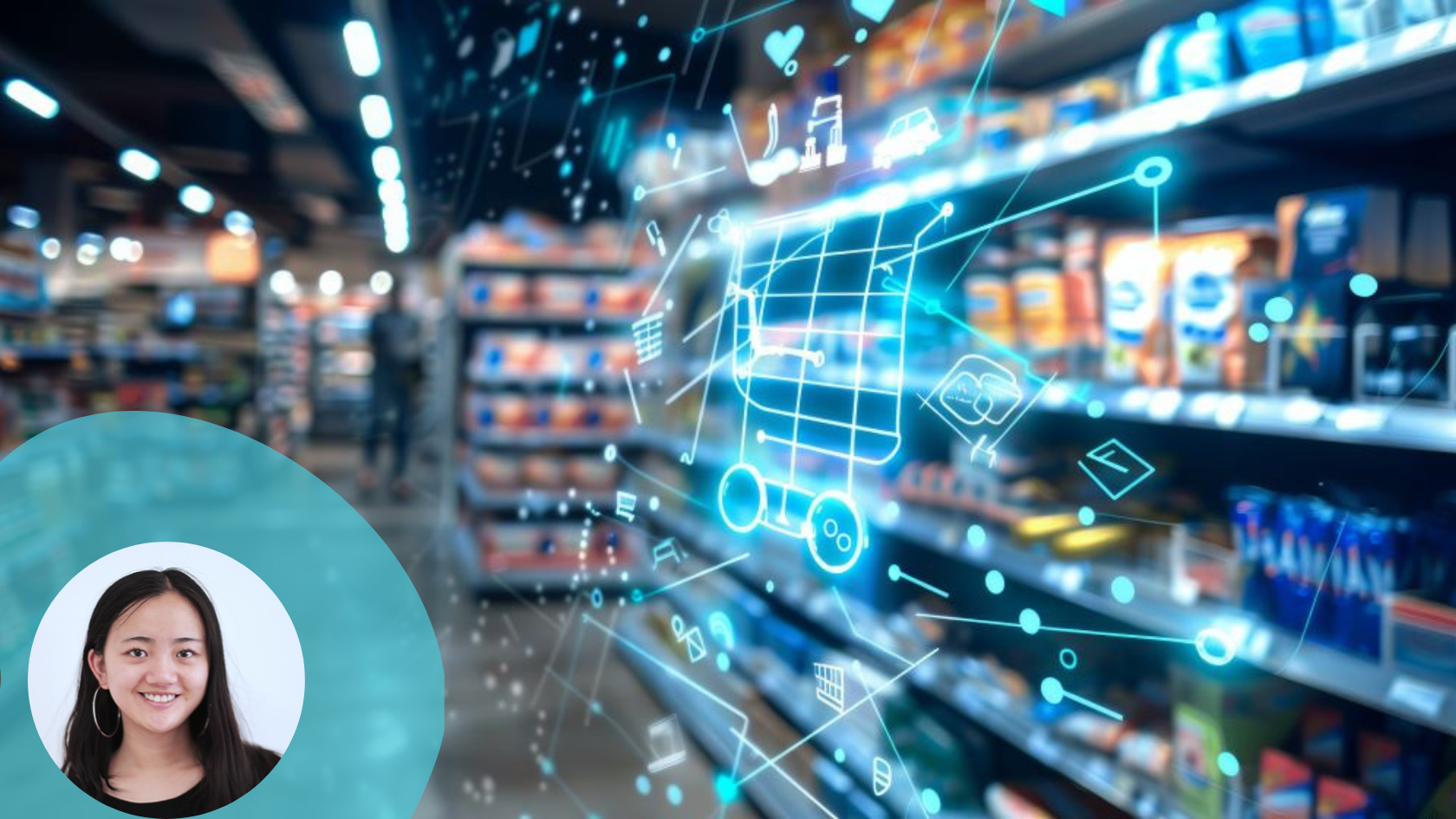

The retail media boom has been booming, and no sector is as exciting as grocery. Filling a grocery cart is perhaps the one retail experience we all share on a regular basis, more than shopping for clothes, tools or any other retail category. For this reason, there have been major investments in exciting retail activations from some of the biggest grocers in the world, with a particular focus on bringing the online and in-store shopping experiences together in one seamless checkout.
Why is marrying up the in-store and online grocery shopping experience the next big thing in grocery? According to a study by FMI and NielsenIQ, more than 90% of grocery shoppers participate in both online and in-store shopping. This is particularly important, as the value of the omnichannel shopper cannot be underestimated. In a report by Grocery Doppio, it was found that omnichannel shoppers spend 1.5 times more than single-channel shoppers and generate an average profit margin of 25.6%. The takeaway: grocers that find ways to supercharge their retail media strategies for this demographic of shoppers will come out on top in 2025.
Grocery Executives are Putting Retail Media in Their Carts
Grocery executives are seeing the value of investing in retail media to meet the moment of the boom and transform their customers’ shopping experiences. According to the State of Digital Grocery: In-Store Media Monetization report by Grocery Doppio, retail media networks for U.S. grocers are valued at $8.5 billion and are expected to double in the next 18 months, with 73% of grocers viewing media monetization as a C-level priority and 88% identifying it as a top growth priority.
The main goal they are trying to achieve is tapping into their own wealth of first-party data to deliver targeted advertisements across online and in-store shopping. But how are grocers actually bridging the online with the offline?
Hall of Fame: Top Grocers Tapping into Omnichannel Retail Media
In the past year or so, there’s been some really interesting activations from grocers across the globe. Take for example Stop & Shop, a popular supermarket chain in the Eastern U.S. boasting 365 locations. Understanding that not all customers have smartphones or access to computers to access digital-only deals, the company introduced “Savings Stations” across its brick-and-mortar locations.
These physical kiosks operate by allowing shoppers to scan their loyalty cards or enter their phone numbers to access personalized offers and digital coupons. The message is clear: just because you aren’t tech-savvy or glued to your smartphone doesn’t mean we can’t meet you where you are to create a more exciting online and offline experience.
Next up is the partnership between popular budget grocery store Aldi and Instacart to uplevel the in-store shopping experience with Instacart’s Connected Stores technologies. Here in the U.S., this includes tapping Aldi’s In-Store mode to help shoppers better navigate aisles, find in-store deals and even check if the item they want is in stock. Aldi uses the same technology to help employees more quickly fulfill curbside pickup orders.
On the international scale, Aldi is testing a more innovative technology with Instacart in Austria called Caper Carts, which are AI-powered shopping carts that allow shoppers to scan, track spending and check out seamlessly. The goal is to make shoppers feel like they have a sidekick while wandering through the aisles, both saving them time on their regular grocery trip and making them feel valued.
Perhaps one of the most future-forward examples is the new checkout-free Sam’s Club in Grapevine, Texas. The membership-only warehouse club launched the store to test out a plethora of different retail media innovations, including allowing customers to use the Sam’s Club app to scan and pay for items, for a more streamlined checkout.
There’s also experiential shopping that allows shoppers to try products while they are browsing in-store and order them online at a later date if they like them. This innovative store is a great example of how a personalized shopping experience can be across in-store and online touch points, making the shopper’s life that much easier at the point of sale.
Artificial Intelligence: The Technology at the Heart of Grocery’s Retail Media Explosion
The grocery store of the future is being defined by artificial intelligence (AI), which sits at the heart of many of these innovative activations discussed. According to eMarketer, in 2024, retail media impressions grew by 28% year-over-year, with clicks increasing by 20%, indicating higher consumer engagement facilitated by AI-driven strategies. This means that for grocers looking to take their retail media strategies fully omnichannel, investing in technology that is centered on AI is imperative.
Grocers worldwide are investing in AI-powered retail media strategies, such as platforms that allow them to analyze vast amounts of data to optimize ad placements, personalize promotions and modernize inventory management (think: those Caper Carts Aldi and Instacart are partnering on). Another example of the use of AI in retail media is AI-based bidding platforms that give advertisers the flexibility to adjust their bids based on the time of day, device and media channel, leading to more campaigns that make a difference. No matter which way you cut it, AI is a necessary tool to bridge the online with the offline and reimagine the shopping experience.
What’s on this Year’s Retail Media Grocery List?
It’s becoming clear that the future of retail media in grocery lies squarely in the ability to make the shopping experience feel like one smooth transaction. The more grocers can streamline, personalize and bring joy to the experience through smart omnichannel retail media, the better chance they have of being a part of retail media’s next big wave. As we lean heavily into AI-based technologies to do just that, the future of how we shop and interact with our carts is only going to bring more surprising activations that give shoppers yet another reason to go to their favorite stores.
Regina Ye is the CEO and Co-founder of Topsort, a leading AI-first ad infrastructure platform that democratizes big tech’s secret monetization technology, serving as the connective tissue for the post-cookie world of ads. A serial entrepreneur, software engineer, and former ecommerce vendor who lived retail and performance based marketing pains and is now democratizing clean advertising and data privacy. She founded Topsort after spending many tireless nights trying to understand Facebook and Amazon Ads while running the beauty ecommerce brand Zirui. Today, her sights are set on demystifying the ad industry for the entire ecosystem, across retailers, marketplaces, brands, and agencies.

